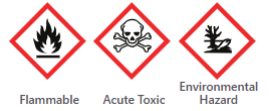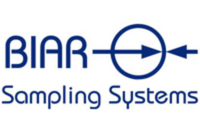Determining Hydrogen Cyanide Strength
Hydrogen Cyanide (HCN) is highly flammable in liquid and vapor forms and can pose immediate danger to human and aquatic life and health in high concentrations. If inhaled, HCN can be fatal. HCN reacts with amines, oxidizers, acids, sodium hydroxide, calcium hydroxide, sodium carbonate, caustics, and ammonia, and can polymerize at 122°-140°F.
Why sample HCN?
- To determine the acid percentage for quality monitoring.
What to Look for in the Sample
- SO2 (sulfur dioxide) and water content. The Karl Fisher titration method is best for this purpose.
How to Safely Take HCN Samples
- As a stable liquid, HCN can be sampled into a bottle. The added protection of a safety cabinet (REVO-BOX) allows for venting that can shield the operator from potential exposure risk.
Hydrogen Cyanide
1) Description
Name: ..............................................................................................Hydrogen cyanide
Chemical Formula: ........................................................................HCN
CAS No: ..........................................................................................74-90-8
Other Names: ...............................................................................Formonitrile, Hydrocyanic acid, Prussic acid
Uses: ...............................................................................................Industrial
Physical state: ..............................................................................Liquid or gas (above 78°F)
Odor: ...............................................................................................Bitter, almond-like odor
Boiling Point: ................................................................................25.5°C (78°F)
Freezing Point: ..............................................................................-14°C (7°F)
Upper Explosive Limit: ..................................................................40.0%
Lower Explosive Limit: ..................................................................5.6%
Vapor pressure: ..............................................................................630 mmHg
2) Hazards
Immediately Dangerous to Life or Health Concentrations (IDLH) NIOSH 1994.
Class IA Flammable Liquid: Fl.P. below 73°F and BP below 100°F. Flammable Gas
H330: Fatal if inhaled.
H400: Very toxic to aquatic life.
Reactivity: Amines, oxidizers, acids, sodium hydroxide, calcium hydroxide, sodium carbonate, caustics, ammonia [Note: Can polymerize at 122-140°F.]
Specific Challenges related to Sampling: Due to its high toxicity and its flammability, HCN is an extremely dangerous chemical. It is also an environmental hazard and sample systems must be designed to minimize exposure risk and potential releases into the environment.
_________

3) Sampling Facts
Plants need to sample to determine % acid and for quality purposes.
SO2 content and water content using the Karl Fischer titration method.
4) Most common Sample Receptacles
HCN is a stable liquid that can be sampled into a bottle.It should be sampled with the added protection of a safety cabinet that can be vented to prevent potential exposure risk.


